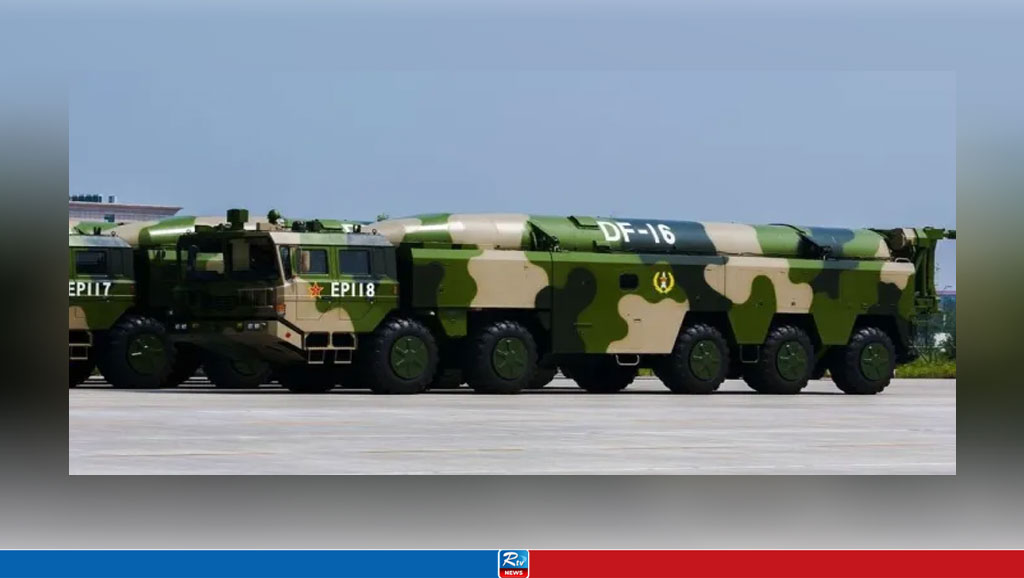China’s Missiles ‘Ape’ Boeing, Airbus Aircraft; Report Claims Beijing Developing ‘Shape-Shifting’ Weapons To Bamboozle Radars
China claims to have developed a technology called “golden veil” that can help their cruise missiles look like a passenger plane on a radar screen. The low-cost technology is meant to confuse sophisticated air defense systems and reduce the time to shoot down the missiles.
A research team in northwest China has undertaken the project. It is an integral component of China’s continuous endeavor to establish diverse methods to defeat air defense systems within the first island chain, Guam, and even the United States mainland.
Dubbed the “Golden Veil,” this innovation purportedly functions by modifying the radar cross-section of a missile to imitate the presence of sizable airplanes like the Boeing 737 or Airbus A320. By attaching it akin to an umbrella, an airborne weapon can seamlessly transition between visible and stealth modes throughout its flight, a report in the South China Morning Post said.
According to Chinese military experts, although China’s military stance is primarily “defensive,” these capabilities would be a potent deterrent against foreign interference in regional matters like Taiwan or the South China Sea.
In a recent publication in the peer-reviewed Chinese Journal of Radio Science, Zong Yali and her colleagues explained that the veil is constructed using delicate gold-plated metal threads. These golden threads intricately weave together to create a complex geometric web, which effectively reflects radar signals.
The technology, weighing approximately one kilogram (2.2 pounds), is designed to be compatible with a range of missiles utilized by the People’s Liberation Army. Furthermore, it is constructed using cost-effective materials, indicating a potential surge in demand in the coming years. The invention can revolutionize warfare by greatly influencing aerial combat tactics.
Zong, an associate professor of radar science at Northwestern Polytechnical University in Xian, Shaanxi province, has been quoted in the report, saying that laboratory testing has indicated that the device can increase the radar cross-section of a flying target from less than one to more than 30 decibels per square meter. This enhancement level is comparable to the radar signature of large aircraft like the Boeing 737 or Airbus A320 when observed from specific angles.
The US already employs radar reflectors on certain missiles, such as the ADM-160 MALD, to give them the appearance of airplanes on radar screens. Stealth military aircraft, such as the F-22 fighter and B2 bomber, commonly utilize removable reflectors called Luneburg lenses to ensure visibility to civilian air traffic control while concealing their genuine radar signature.
In a recent paper, Zong highlighted the increasing complexity of electronic warfare, rapidly introducing new electronic countermeasure equipment and tools. These advancements are revolutionizing the nature of warfare.
However, its remarkable flexibility sets the veil apart from existing radar reflection technology. Resembling an umbrella, it can be effortlessly deployed or folded multiple times, enabling the missile or aircraft to transition seamlessly between visible and stealth modes.
The researchers said the folding and supportive shape is made of carbon fiber materials, and they could provide sufficient power for military service. The veil can also randomly alternate shape and length, generating bizarre patterns to confuse computer or radar operators.
The added advantage of the veil is its notably low cost and weight. The veil is manufactured from low-value materials in China’s commercial manufacturing chain.
The Chinese government is engaging in an arms race involving advanced yet affordable weaponry like cruise missiles and drones as it would not only enhance the military capabilities of the PLA but also lead its adversaries into financial ruin.
PLA’s Cruise Missile Capabilities
China’s cruise missiles have their roots in the Cold War, but it wasn’t until the 1990s that China started to get help from the Russian Federation. After the Soviet Union collapsed, Moscow needed hard cash, and China had surplus money to spend on Russian cruise missile support.
Many of the Chinese cruise missiles are derivative of Russian designs. Many Chinese technical experts and scientists who couldn’t find work in Russia helped China. Now, Beijing is working towards indigenization.
Cruise missiles have high pre-launch survivability, and the mobility adds to their prowess. They are easy to deploy. Long-range cruise missiles also require satellite guidance for precision attacks.
Land-attack cruise missiles (LACMs) help to defeat enemy missile defenses by being hard to detect. LACMs are better at striking point targets than ballistic missiles, such as command nodes or bases. Another attraction of cruise missiles is that they are otherwise small projectiles moving at low altitudes, making it difficult for enemy missiles to track and destroy them in flight.
The People’s Liberation Army Rocket Force that controls and operates Chinese ballistic and cruise missile brigades has made it an essential part of its strategy to counter the US in the Indo-Pacific. Cruise missiles can be launched from various mobile and fixed platforms. Cruise missiles are often called the “poor man’s” air force in that they are relatively inexpensive weapons and means of striking enemy targets, contributing to the offensive strike capabilities of a state.
According to a Pentagon report, China has deployed more than 1,250 ground-launched theatre-range ballistic and cruise missiles with ranges between 500 and 5,500 km – capable of hitting US targets in the Indo-Pacific region. To close the missile gap between the two countries in the Indo-Pacific region, US lawmakers in July 2023 introduced a bill that required the secretary of defense to develop a strategy for building a “Ring of Fire”.
Geologically, the “ring of fire” refers to a 40,000-kilometer-long zone marked by earthquakes and volcanic eruptions extending in a horseshoe shape around the Pacific Ocean. A report titled “Rings of Fire: A Conventional Missile Strategy for a Post-INF Treaty World,” released last August by the Washington-based think tank Center for Strategic and Budgetary Assessments, says the most appropriate set of rings corresponds to the ranges of the existing classes of conventional missiles: short-, medium- and intermediate-range.
The bill’s sponsors wrote, “Japan and the Philippines could host shorter-range systems, while longer-range systems could be deployed to northern Australia, the Pacific Islands, and Alaska.”
27 Dec 2023,23:39
















 Live Tv
Live Tv


